Whether it’s your first time in nature or you’ve been on the trails before, our expert guide to our best hiking tips for beginners will help you gain the confidence and skills you need to hike like a pro, and stay safe!
Take it from us – there is nothing better than packing a bag full of snacks, grabbing your best friends, and hitting the great outdoors for some epic adventures.
The last couple of years have been tough for a lot of people around the world, and many of us have spent way more days cooped up indoors than we’d like.
But now that things are returning to normal, we’re all itching to get outside again and soak up some fresh air.
Everyone has a different level of comfort and experience when it comes to being in the great outdoors.
Some are more than happy to walk around their neighbourhood and check out their local parks, while others are more interested in venturing deep into the wilderness on multi-day treks.
No matter your style, the scientific benefits of being outdoors and walking in nature have been well documented. So do yourself a favour, switch off Netflix and go see for yourself on a hike.
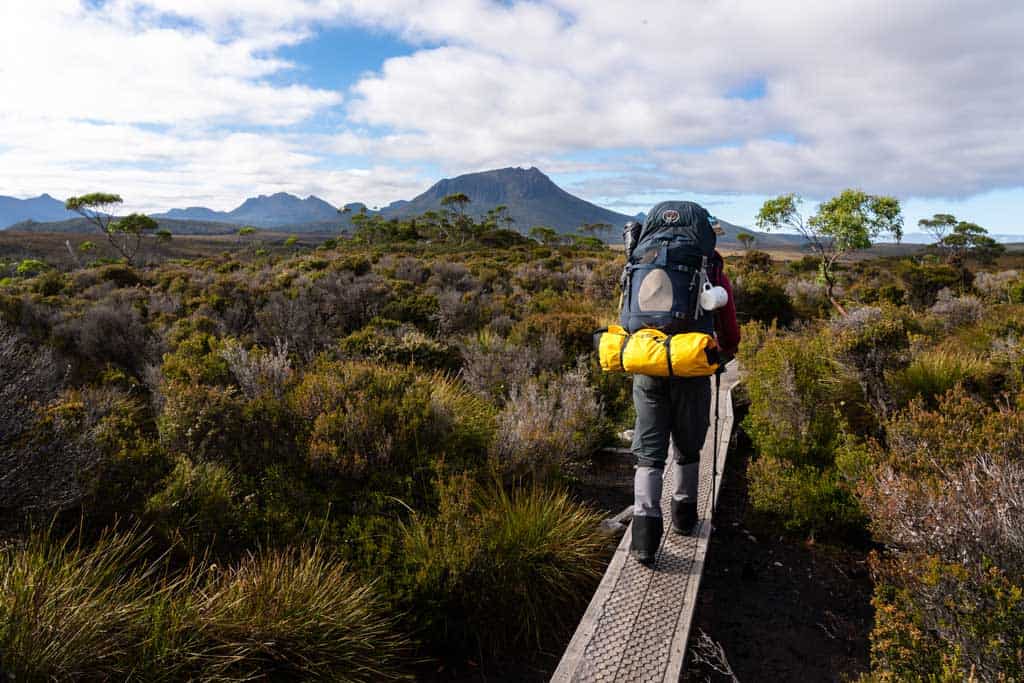
Being outdoors in nature helps the brain produce endorphins, which are neurotransmitters responsible for regulating mood.
So in other words, being outdoors releases happy vibes and thoughts, putting you in a good mood. It is great for your health, both mentally and physically.
For some people though, hiking is new to them, and walking for many hours may seem to be a bit intimidating.
Never fear though, because we know exactly how you feel! While we now love nothing more than going on a long, multi-day expedition with all of our supplies on our back, once upon a time we too had never really enjoyed a long walk in nature.
If you want to step outside as a confident hiker, we are here to help and give you our top hiking tips.
Because while it may seem as simple as putting one foot in front of the other, there are a few things that you should know before heading out onto the trails.
Depending on your experience and physical capabilities, there are three basic types of hiking terrain you need to consider before committing to a walk. These are:
- Easy Trails – These are the trails that are well maintained, often paved, boardwalks, compacted, or manicured, and the track will be more-or-less flat with slight changes in elevation.
- Uneven Trails – This next level is a step up. This type of terrain is usually uneven with rocks, roots, natural steps, and possibly mud. This kind of hiking will put a strain on your legs and ankles with uneven ground and uphills and downhills. These trails may be walked on regularly but maybe not be maintained, and they usually follow some kind of defined path.
- Off-Trail – This would be the kind of terrain that needs a great level of hiking experience. You may be crossing rivers, scrambling up rocky sections, using your hands and feet to climb up and over boulders, etc. The trails will be uneven, most likely with loose rocks and sometimes the trails are not even marked, requiring navigational skills. This is something to slowly build up to and fuel that adventurous side you have deep inside!
In this blog post, we will give you some tips for hiking to make sure you have a comfortable and awesome time so you’ll be back for more.
Let’s get you confident and prepared to start hiking.
READ MORE: See our best travel tips as well!
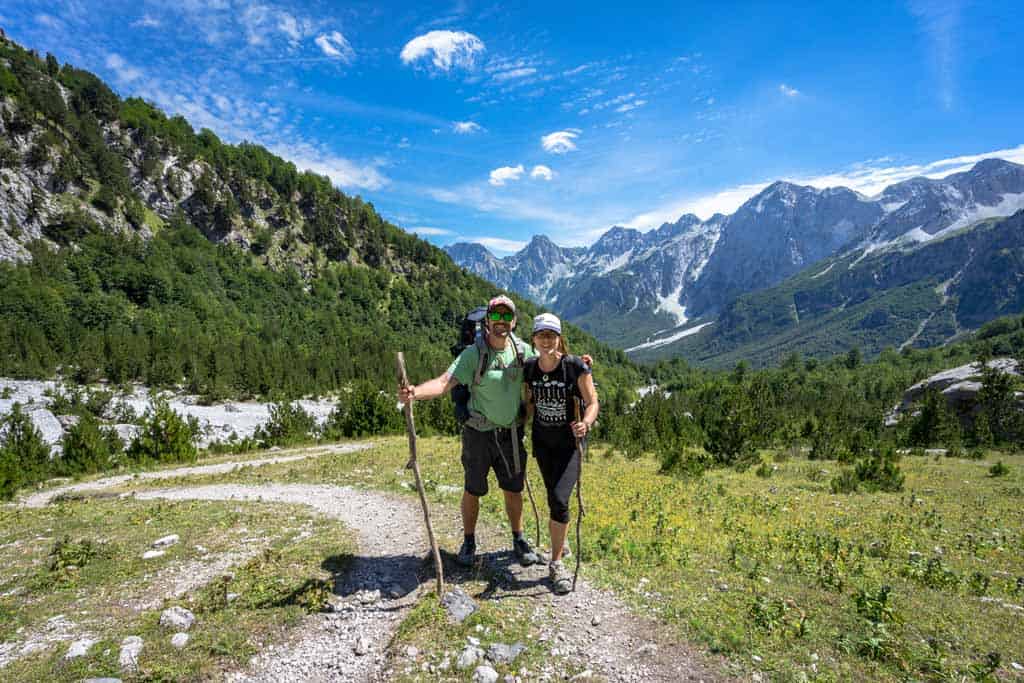
Table of Contents
- Our Best Hiking Tips for Beginners
- 1) Start with a Short and Easy Hike First
- 2) Pick a Trail that is Appropriate for the Time of Year and Weather Conditions
- 3) Get Yourself Some Hiking Socks
- 4) Make Sure You Have the Right Walking Shoes or Hiking Boots (and Wear Them In!)
- 5) Get Yourself Some Trekking Poles
- 6) Dress in the Right Hiking Clothes
- 7) Hike At Your Own Pace
- 8) Bring Plenty of Water and Snacks
- 9) It’s Good to Take Breaks
- 10) Bring a First Aid Kit for Hiking
- 11) Always Have Sun and Bug Protection
- 12) Let Someone Know Where You Are Going
- Wrapping Up Our Tips for Hiking
Our Best Hiking Tips for Beginners
To get you on the trail and ready to start hiking, here are our tips for beginner hikers.
1) Start with a Short and Easy Hike First
If you’ve only ever done some short, local walks before and want to hiking, make sure you don’t overdo it the first time.
Don’t instantly commit to trekking to Everest Base Camp if you’ve never walked more than a mile before. Instead choose a short, easy hike that’s not too remote before attempting something longer and more difficult.
Look for a hiking trail that will push your limits a little, but isn’t too long. Something under 5 kilometres (3 miles) is perfect, as you’ll be able to hammer it out in a morning or afternoon.
By starting off with a short hike you will be able to determine if this type of outdoor activity is for you. You’ll know how much your body can handle (especially your knees and ankles) and your skill level.
This will also allow your muscles to warm up so they don’t cramp on the trail.
Starting off with short hikes will build your hiking skills and confidence. You will eventually work up to longer hikes, but just go for the short ones to begin with.
After many years of practice, we decided to take on the World’s Most Dangerous Hike in China. Read our story here!
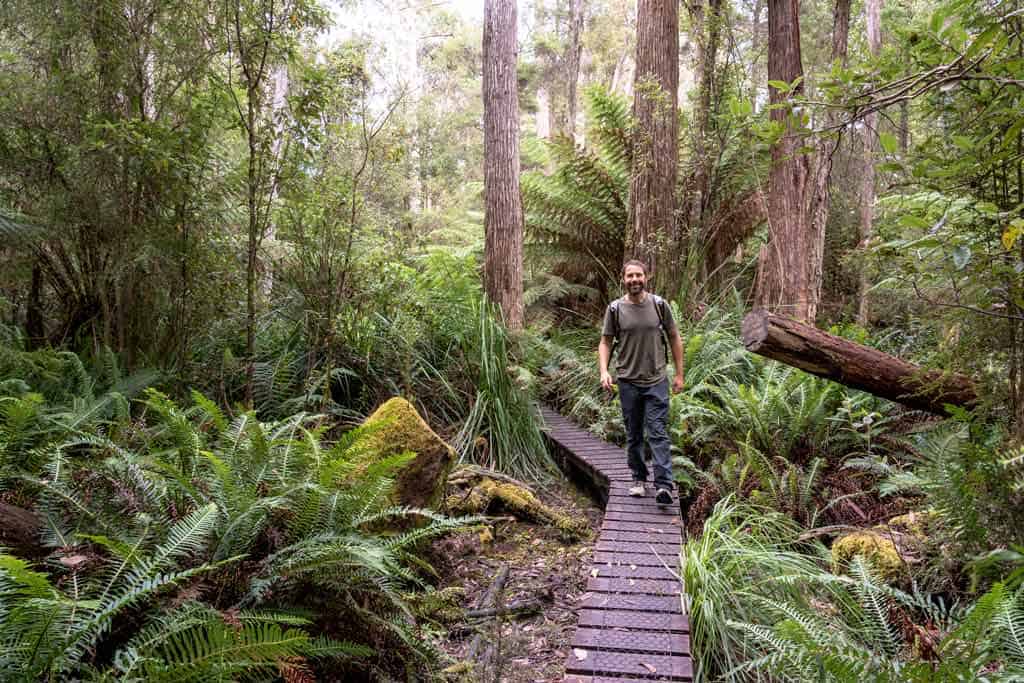
2) Pick a Trail that is Appropriate for the Time of Year and Weather Conditions
Sure, you have probably already checked the weather forecast before you go out to hit the trail, but do you know if that particular trail is in good condition at this time of year?
This is a hiking tip that people don’t really think about. The trail you choose should be suitable to the time of year in addition to weather conditions.
Before setting off on a hike, one of the first things we do is check the weather for the day. That way we know how to best prepare, what to bring, and maybe change plans if things aren’t looking fantastic.
If you’re heading into the mountains and there’s rain in the forecast, consider staying at a lower altitude instead so you don’t get caught by unexpected snow for example.
Or if you’re in the desert and it’s a very hot day, make sure you bring extra water and sun protection and don’t venture too far from the car park.
But no matter what, we always carry a rain jacket in our hiking backpack just in case, along with sunscreen, a hat, and enough water for the hike.
If you are hiking during the winter months be sure to dress in layers so you can adjust for warmer or colder temperatures as needed. Be smart and prepared.
But what about ‘time of year’ considerations?
If you’re planning a hike in the spring, just because there’s no snow on the ground in town don’t think it’s going to be all melted up at the top of a peak.
Some hiking trails take months to open up after a long winter or wet season, so if unsure, always ask a park ranger or local.
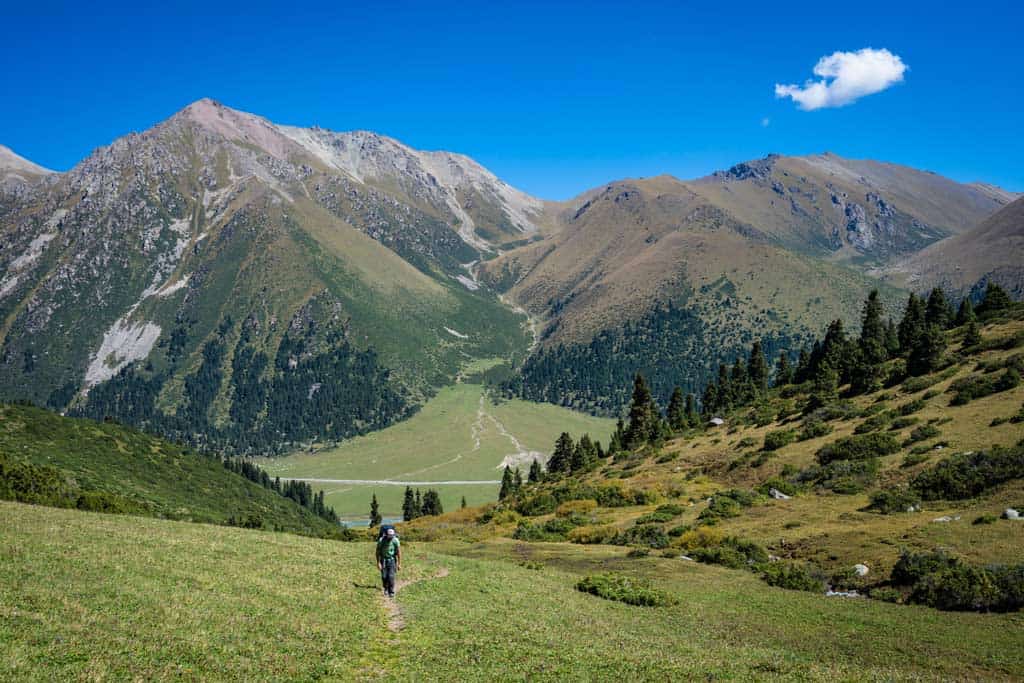
3) Get Yourself Some Hiking Socks
When it comes to hiking in nature, you have to make sure you have the right hiking gear, like a hat, shoes, and weather-resistant clothing.
Not a lot of people think about their socks though.
Most new hikers, and even some experienced ones, think that they can get away with any old socks they pull out of their drawer.
Sure, you can do that. But you may end up regretting it.
Our next hiking tip for beginners is to invest in some great hiking socks and even some sock liners.
READ MORE: See what else makes the cut in our list of the top hiking essentials!
When you are hiking your feet sweat and swell, so you need socks that can handle getting a bit wet or sweaty, and still allow your feet to breathe without chafing.
Good quality hiking socks aren’t cheap, but they are worth their weight in gold. Trust us, your feet will thank you!
Because we hike so much, we have multiple pairs of hiking socks. You can pick them up from any outdoor store or online.
We usually purchase merino wool socks. Merino wool is highly recommended as it naturally absorbs and balances moisture, doesn’t stink, and dries quickly.
You can get different thicknesses too. Don’t get the wrong socks for your weather conditions.
For day walks, lighter cushioned socks are really good. Or you can get a pair of lightweight merino wool socks for summer hikes and if you go out in winter look for the thicker merino wool hiking socks.
Make sure your socks are longer than your hiking shoes too. This is so it doesn’t ride down into your shoe.
If your sock is too low, it will slip in the shoe. This is so annoying and causes discomfort and sometimes blisters, while also allowing dirt and mud to get onto the skin.
Avoid any cotton socks – these are a no-go as they are not breathable and will rub.
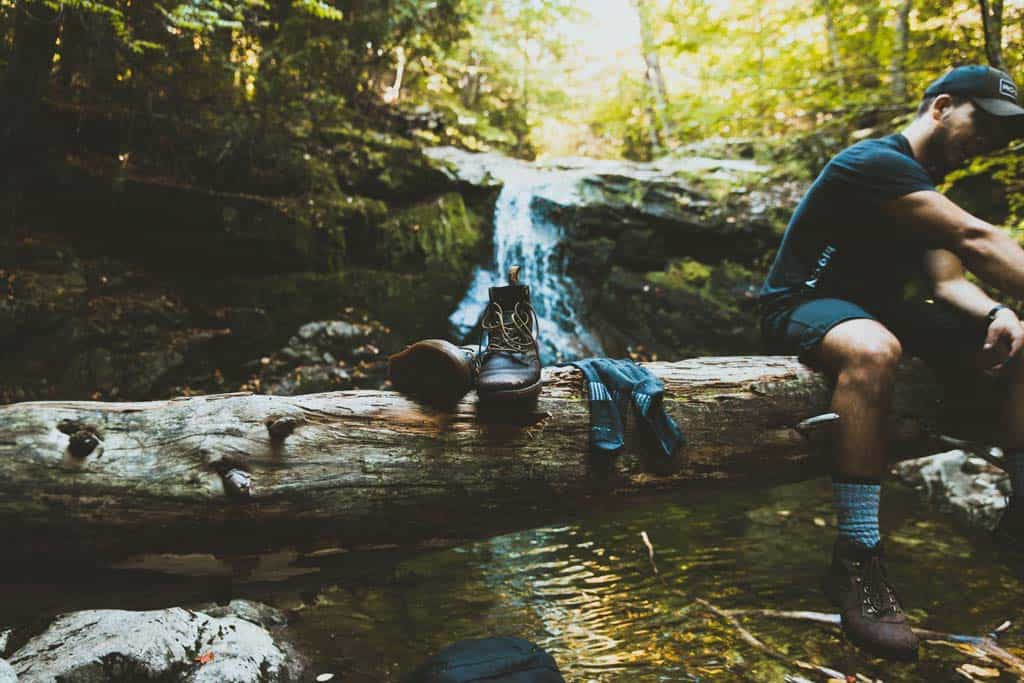
4) Make Sure You Have the Right Walking Shoes or Hiking Boots (and Wear Them In!)
This is a must must must!
If you’re planning on walking around in nature make sure you get a pair of decent walking shoes or hiking boots to protect your feet and keep them dry and comfortable.
You don’t need to go out and buy a $400 pair of high-tech boots, but don’t just throw on a pair of cheap slip-on and hit the trails either.
If you have a pair of comfortable and supportive running shoes, these are great to start off with. Otherwise, swing by your local adventure store and pick a lightweight pair of trail shoes or hiking boots.
But here’s the biggest tip – Make sure you wear them in before you go on your hike!
If you have brand-new shoes it’s important to go for short walks to break them in, soften them up and mould them to your feet before you go for a big hike.
New shoes can give blisters when you are hiking, which of course is neither fun nor comfortable.
If you’ve never purchased walking or hiking shoes before, we recommend going into your local adventure store and asking for the expert’s advice.
Try the shoes on in the store and walk around. Jump side to side. Kick your feet hard on the ground to push your toes to the front. You really need to make sure they fit properly, aren’t too thin or narrow, and don’t cramp your toes, or give too much movement.
Every shoe brand fits differently, and sizes can vary, so for example you may be a size 10 in Salomon shoes, but a 9.5 in Merrells. And don’t forget to allow room for your hiking socks!
There are also different styles, such as low cut, mid-ankle or full hiking boots, all offering different levels of support for different hiking styles.
We recommend hiking boots that go over your ankles for great support while you are walking.
Read next: Check out our buyer’s guide to finding the best hiking boots.
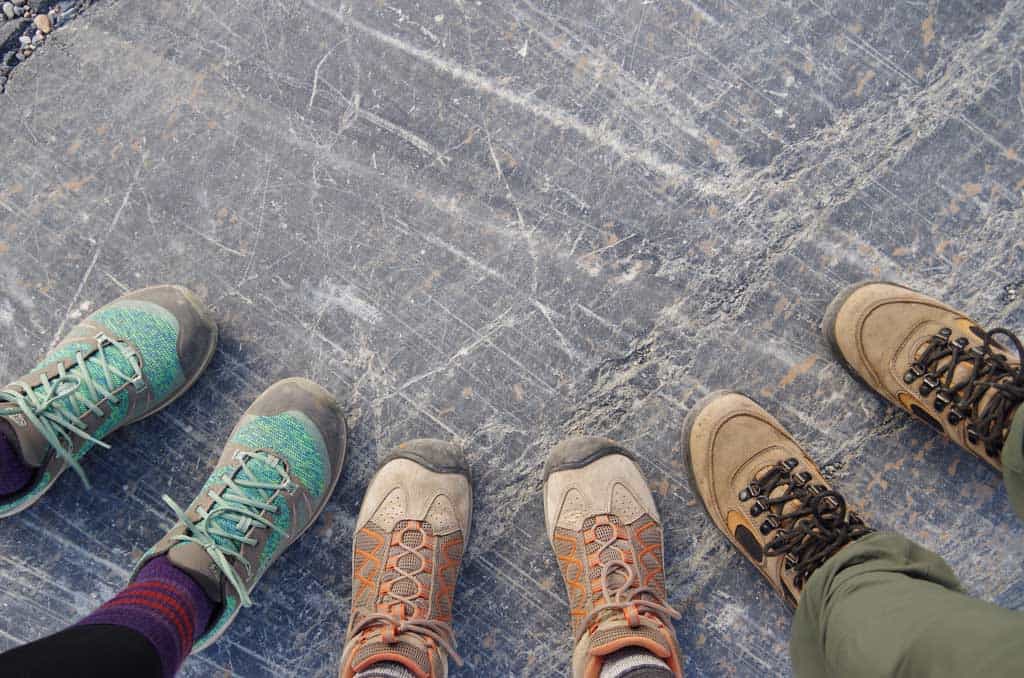
5) Get Yourself Some Trekking Poles
For the longest time, we hiked without trekking poles. We just assumed they were for people with bad knees or people who were unsteady on their feet.
How wrong we were.
A few years ago we trekked the 8-day O Circuit in Patagonia, and each bought a pair of trekking poles because our friends found some for $15.
Within an hour of being on the trail our lives had changed, and now we don’t do any long-distance trek without them.
Hiking poles are used to help ease the strain on your knees, especially when walking down steep hills, which can be a killer.
But they also help going uphill by giving you momentum and power.
They are great for balance on uneven trails and can help you navigate through muddy sections. They also improve your posture and can make you more upright as your hike.
I also find they help with my breathing, as I tend to control it with my steps.
I love using my poles to go up or down a hill. Jarryd is one of those hikers that charges up with no need for poles, but he carries them anyway.
Trekking poles will allow you to move some of your weight from your legs to your shoulders, arms, and back, which may reduce lower-body fatigue.
Hiking poles are also great for clearing spider webs, cutting through thick bushes, or moving things off the trail if you need them.
As you can tell, they serve a lot of purposes, so if you’re planning on hiking for more than a few hours consider getting yourself a pair.
YOU MAY ALSO BE INTERESTED IN: Check out our ultimate buying guide to the best trekking poles on the market.
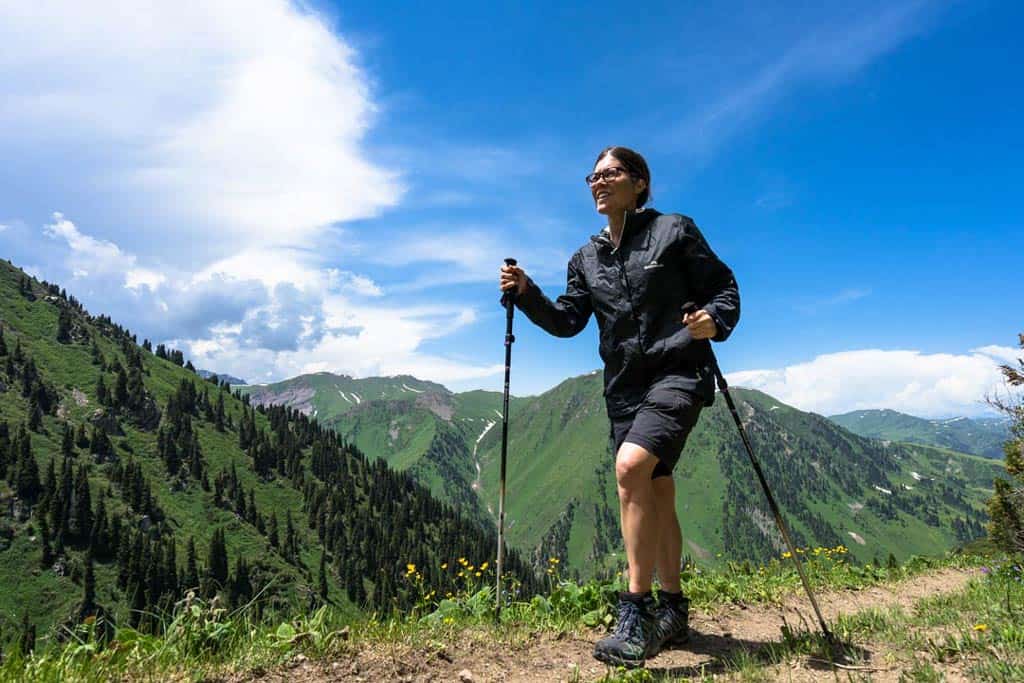
6) Dress in the Right Hiking Clothes
Knowing what the weather is doing is one thing. But dressing for it properly is an entirely different, and more important, matter.
When you’re out hiking be sure to dress appropriately for the weather conditions, and also wear clothing that is comfortable and breathable.
You can buy hiking shirts and pants that are stretchy and will be more comfortable when you are hiking up a mountain. It will give you more room to move.
Breathable long pants and long shirts are ideal because they can protect your skin from the sun and from scratches when hiking through thick forest.
We have hiking pants that can zip off and turn into shorts. We love them and wear them all the time hiking.
Make sure your clothing is quick dry so that your body will stay dry when you sweat or if it rains. We have merino wool t-shirts for hiking and love them as they are breathable and don’t get rancid with odor.
Avoid jeans. I see people hiking in jeans sometimes and it does not look comfortable at all. Avoid cotton clothing as this type of material is not breathable.
Always carry a lightweight rain jacket in your backpack. This can be for the rain or for wind.
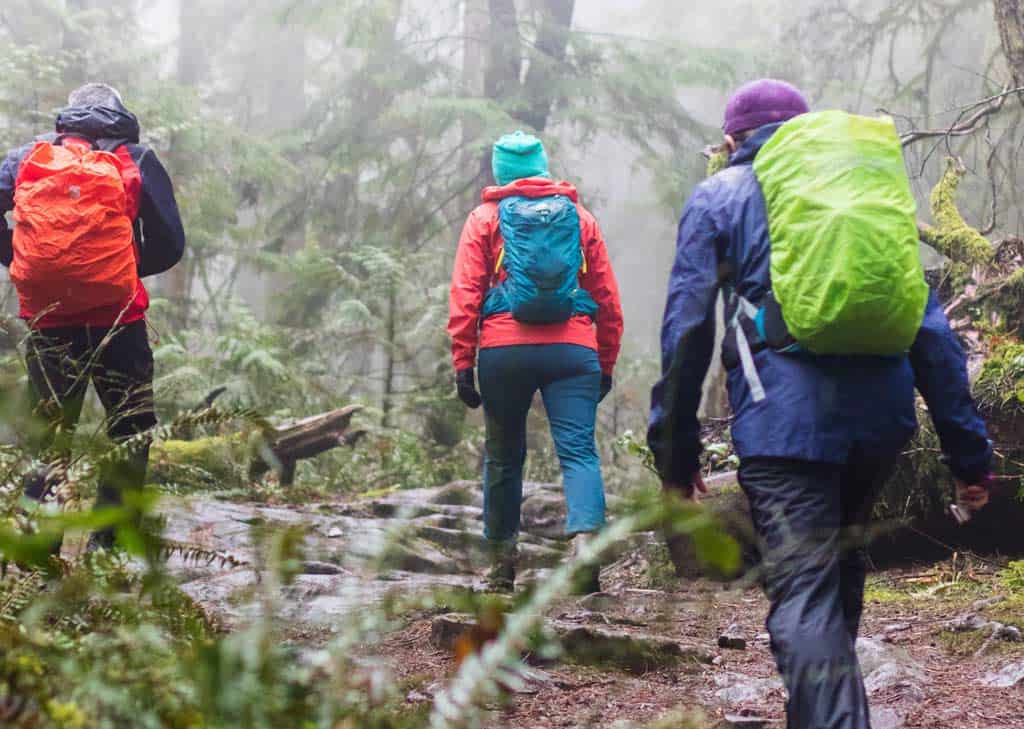
7) Hike At Your Own Pace
Hiking at your own pace is so important and you will work out quickly if you are hiking too fast for your body. Finding a hiking buddy who hikes at the same pace as you would be amazing, but it does not always happen.
Jarryd and I hike at different paces. He will sometimes hike ahead and wait for me at spots. If he hikes too slow, he loses momentum and his knees hurt a little. So he hikes faster than I.
If I try and keep up with him, I feel more fatigue and lose concentration, and I have injured my muscles due to over-exhaustion. So we hike at different paces and that is totally fine.
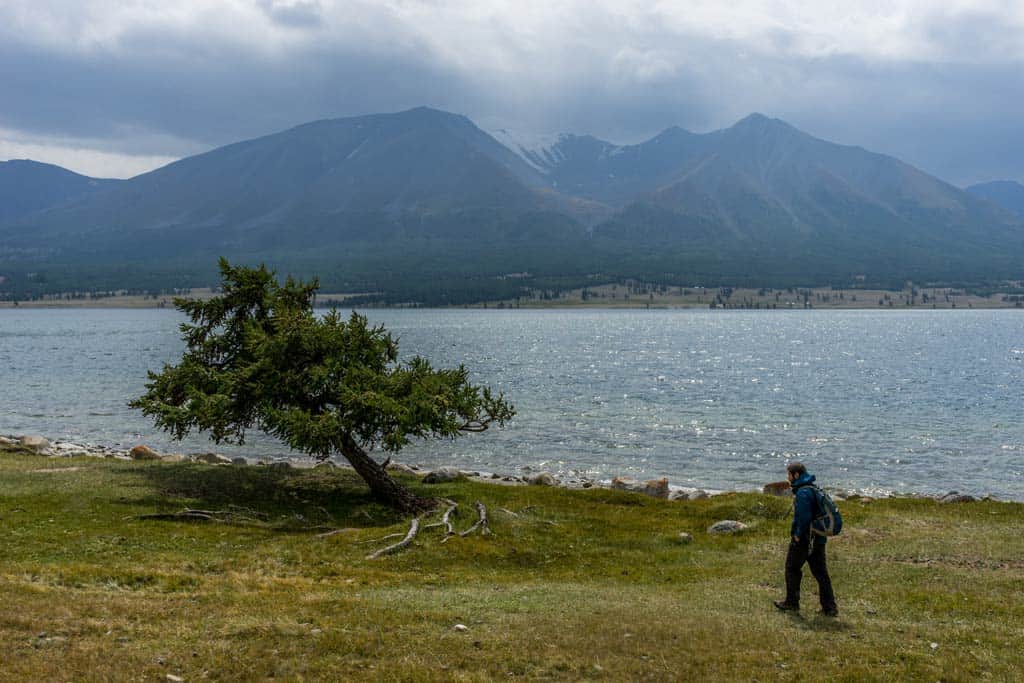
8) Bring Plenty of Water and Snacks
You can’t go hiking without bringing water and food to fuel your energy. We always have at least 2lts of water each if we are going on a day hike and there is nowhere to fill up. A water bladder is great to carry this much water.
If you are hiking and there is water available along the way, take a litre and fill up when you can.
Pack smart by packing plenty of food so that you don’t get too hungry! We carry snacks like protein muesli bars, chocolate, mixed trail, dried fruits, or jerky (veggie or meat). These are great snacks for hiking.
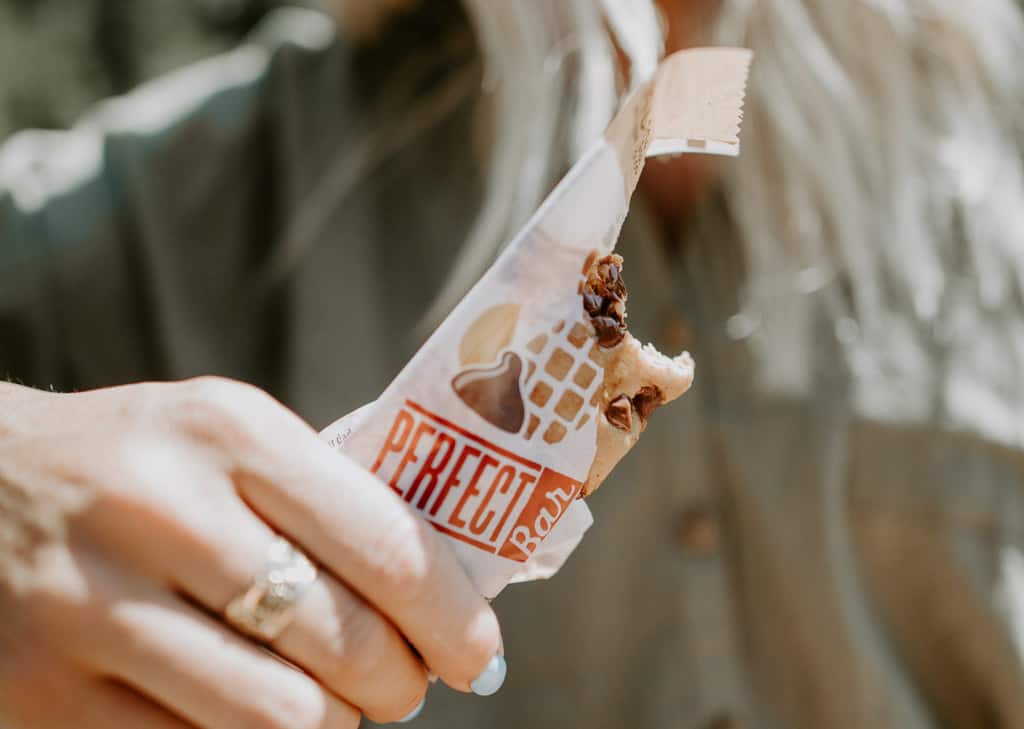
9) It’s Good to Take Breaks
Now when I am talking about breaks, I am talking about stopping for a period of time and taking the backpack off. Have a drink of water or have a snack for more energy. It is important to keep your body fuelled.
But do not take too many breaks. When we are hiking with a backpack (with camera gear, water, and so on) we would maybe stop every 1 – 1.5 hours for a little rest and to take the backpack off.
Of course along the way you are going to be stopping off at lookouts but do not stop for too long. This is because your muscles will cool down. You have just warmed them up and stopping for a long period too often could cause your muscles injury.
READ MORE: Check out our guide to the Overland Track, a 7-10 day adventure in Tasmania.
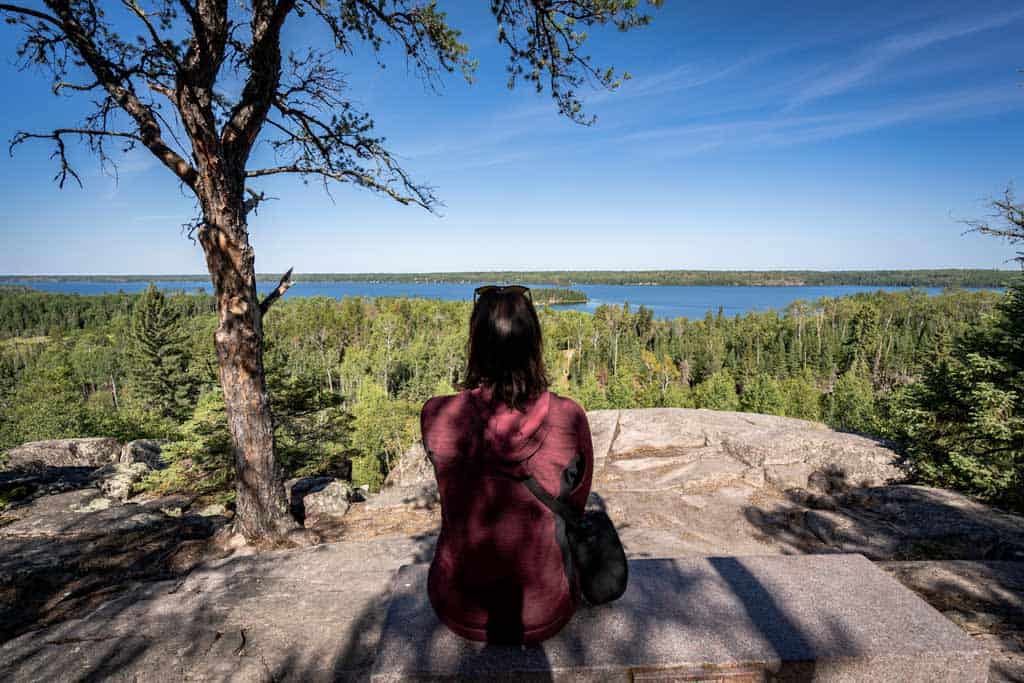
10) Bring a First Aid Kit for Hiking
You don’t need a big fist aid kit but pack a little one with items you might need. You don’t know when you may need to use it. Someone might sprain their ankle or have a fall, get bitten by a spider, or maybe you might come across someone having an episode.
It is important to be prepared for anything. Here are some essential items you may need for your hiking first aid kit.
- Antiseptic wipes
- Antibacterial ointment
- Assorted bandages
- Gauze pads in various sizes
- Medical tape
- Moleskin or another type of blister treatment
- Ibuprofen (or another preferred pain-relief medication)
- Insect sting treatment
- Antihistamine for allergic reactions
- Non-stick pads
- Butterfly bandages
- Tweezers
- Safety pins
- Multitool
- First-aid cards that include instructions on how to use the items if you are not familiar
- Emergency Blanket
- Torch (little hand one)
I know the last two on the list are strange but I also pack a torch just in case we are out there later than expected and have light to guide us back and an emergency blanket. This doesn’t take up much room but could save my life if ever needed.
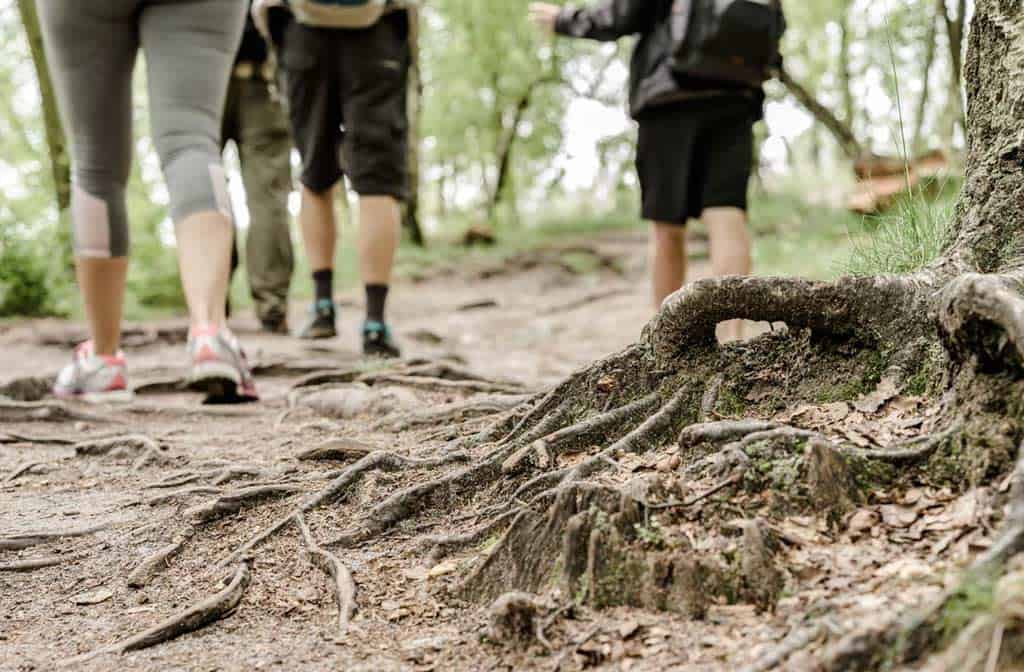
11) Always Have Sun and Bug Protection
The sun can be harsh so make sure you are protected from it. Having a nice wide brim hat when hiking will keep the sun off your face.
Apply sunscreen every couple of hours to protect your skin and wear polarised sunglasses to protect your eyes. I have a little tube of sunscreen that permanently lives in my hiking backpack and I top it up before every hike.
Wearing longer clothing that is UPF protected will help with the sun’s rays. Don’t forget a chapstick for your lips. They can burn too.
If you are hiking in an area with a lot of insects or mosquitos (they are the worst), then don’t forget some insect repellent. I also have a small spray bottle of natural repellant I keep with the sunscreen, and I store both in a resealable bag in case they ever leak.
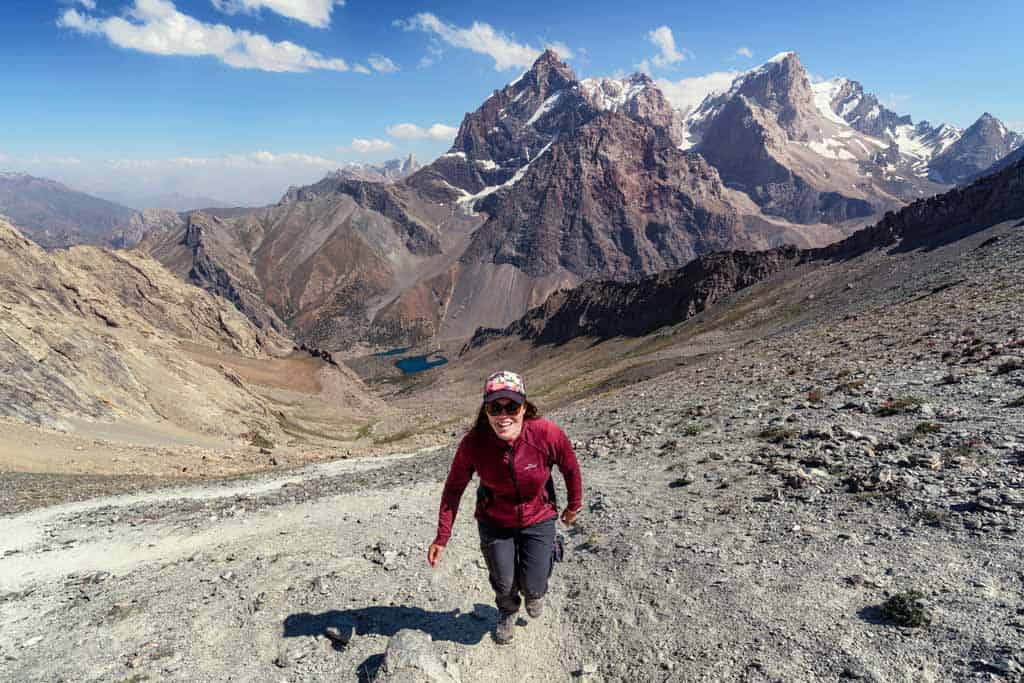
12) Let Someone Know Where You Are Going
This is the first thing anyone should do when they want to go for a hike. Always let someone know what hike you are going on or what area you will be in.
Whether you are by yourself or with a friend, letting someone know will help out in case you run into trouble. Be a smart hiker from the get-go.
Also, it is a good idea to invest in a handheld GPS device so that you always know where you are and how to get to where you’re going.
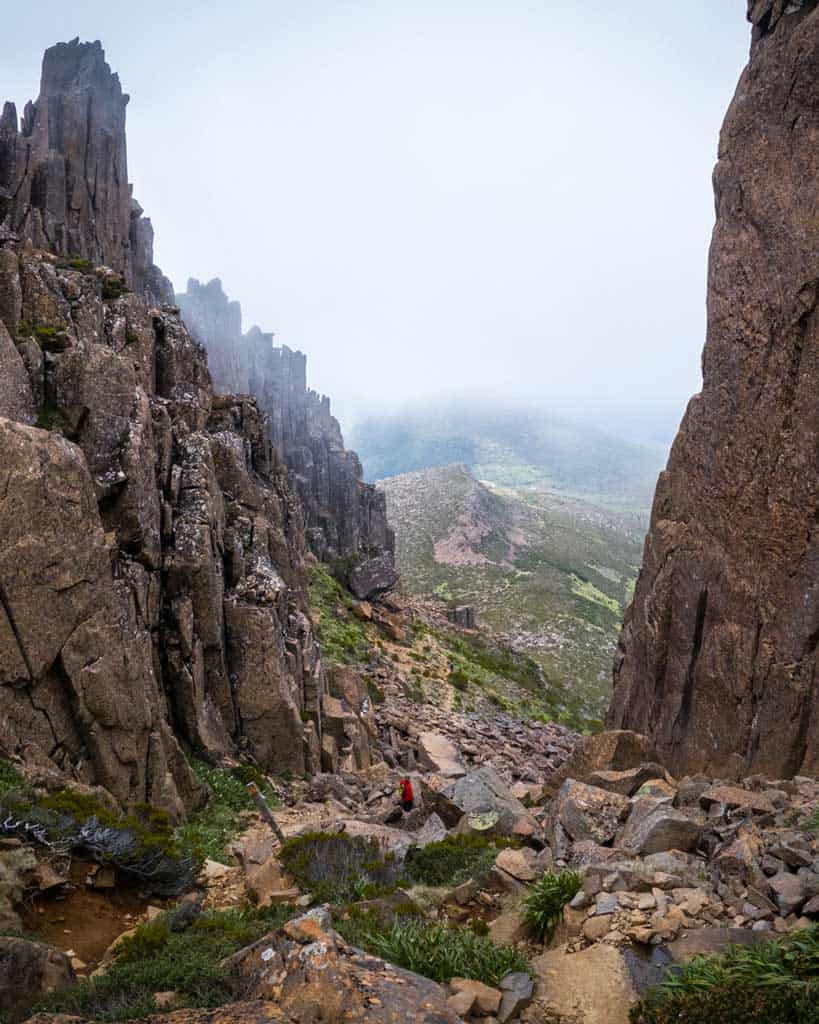
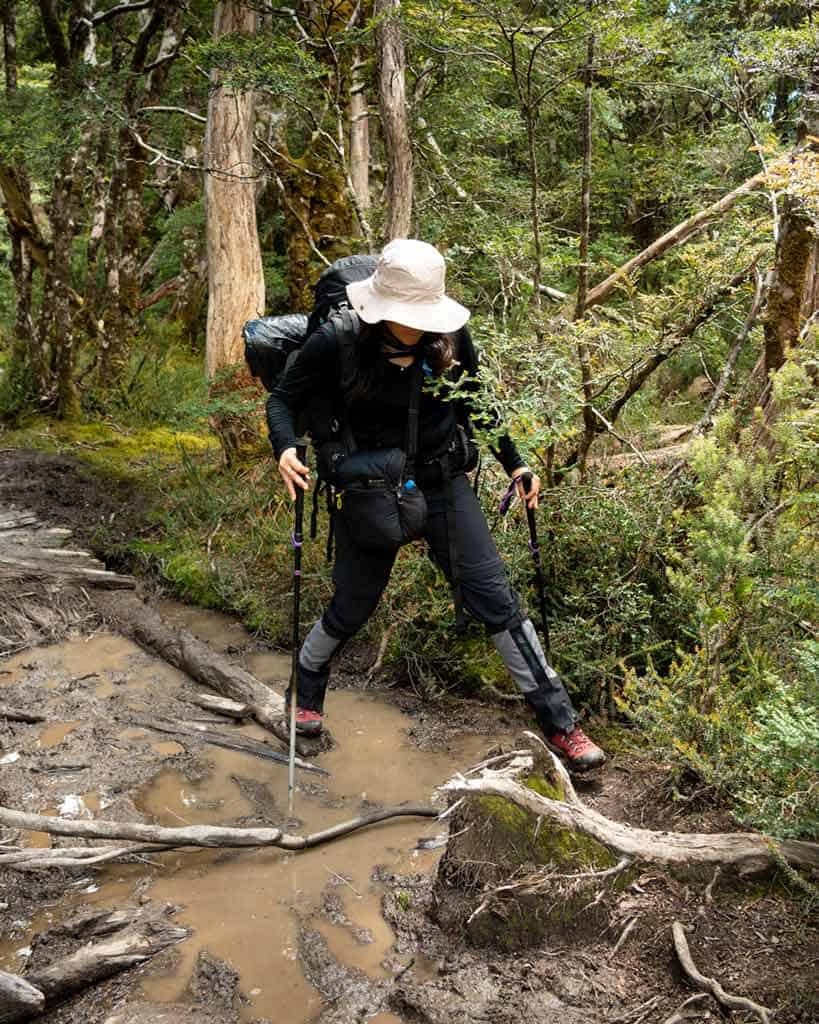
Wrapping Up Our Tips for Hiking
I hope all these hiking tips help you feel prepared and confident for your first hikes.
Even if you’re taking on your first short morning hike, before you know it you will be carrying all your gear to do an epic overnight trek.
Make sure you get the right hiking gear and you are prepared, you will have a great time and want to go back for more. Hiking is addictive. Get out there and start hiking!
DISCLAIMER: Some of the links in this article are affiliate links, which means if you book accommodation, tours or buy a product, we will receive a small commission at no extra cost to you. These commissions help us keep creating more free travel content to help people plan their holidays and adventures. We only recommend the best accommodations, tours and products that ourselves or our fantastic editorial team have personally experienced, and regularly review these. Thanks for your support, kind friend!


4 thoughts on “Our 12 BEST Hiking Tips (From 15 Years Trekking)”
great blog on hiking tips
Thank you so much. Glad to help. 🙂
Thank you for sharing these 12 amazing hiking tips! As an outdoor enthusiast, I found your blog post to be incredibly informative and insightful. These tips will surely come in handy for anyone planning a hiking adventure. From choosing the right gear to staying hydrated and practicing Leave No Trace principles, you’ve covered all the essentials. I appreciate the emphasis on preparedness and safety, as well as the reminder to take breaks and enjoy the scenery. Keep up the great work! Happy hiking!
So heavier the shoes, so better… Because of injuries. After all these crab-hiking shoes with low weight, or medium weight, I decided on the heavy old fashion mountain boots used by the German and Dutch Army … Never again any pain when hiking through rough places… And they last much longer and they are even not more expensive… Last treks … to Langtang, Gosaikunda lakes (you have to go there,… so beautiful) Manang to Muktinath over the Thorong La Pass… Challenging, all in Nepal…